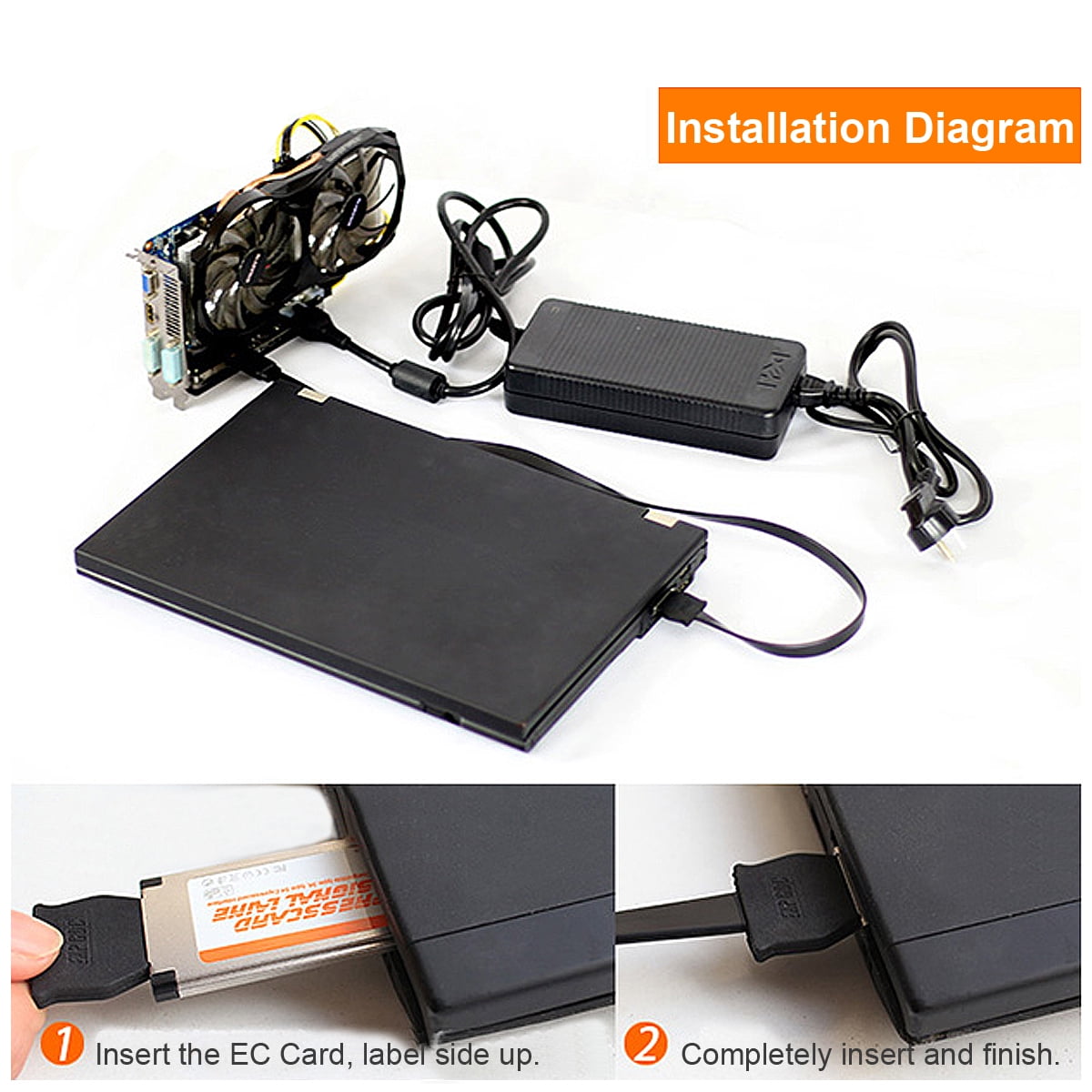


In 1984, Hitachi released ARTC HD63484, the first major CMOS graphics processor for PC. The Williams Electronics arcade games Robotron 2084, Joust, Sinistar, and Bubbles, all released in 1982, contain custom blitter chips for operating on 16-color bitmaps. It was used in a number of graphics cards, and was licensed for clones such as the Intel 82720, the first of Intel's graphics processing units.
#External graphics card for laptop laptop review Pc
It was the first fully integrated VLSI (very large-scale integration) metal-oxide-semiconductor ( NMOS) graphics display processor for PCs, supported up to 1024x1024 resolution, and laid the foundations for the emerging PC graphics market. It became the best-known GPU up until the mid-1980s. The NEC µPD7220 was the first implementation of a PC graphics display processor as a single Large Scale Integration (LSI) integrated circuit chip, enabling the design of low-cost, high-performance video graphics cards such as those from Number Nine Visual Technology. Rival ATI Technologies coined the term " visual processing unit" or VPU with the release of the Radeon 9700 in 2002.

It was presented as a "single-chip processor with integrated transform, lighting, triangle setup/clipping, and rendering engines". The term was popularized by Nvidia in 1999, who marketed the GeForce 256 as "the world's first GPU". Later, in 1994, Sony used the term (now standing for graphics processing unit) in reference to the PlayStation console's Toshiba-designed Sony GPU in 1994. In the 1970s, the term "GPU" originally stood for graphics processor unit and described a programmable processing unit independently working from the CPU and responsible for graphics manipulation and output. In certain CPUs, they are embedded on the CPU die. In a personal computer, a GPU can be present on a video card or embedded on the motherboard. Their highly parallel structure makes them more efficient than general-purpose central processing units (CPUs) for algorithms that process large blocks of data in parallel. Modern GPUs are very efficient at manipulating computer graphics and image processing. GPUs are used in embedded systems, mobile phones, personal computers, workstations, and game consoles. The 3080 can operate at up to 150 W while the 3070 can operate between 125 W and 140 W depending on thermal headroom.A graphics processing unit ( GPU) is a specialized electronic circuit designed to rapidly manipulate and alter memory to accelerate the creation of images in a frame buffer intended for output to a display device. The catch is that these are the mobile variants of the 30 and are not user-replaceable. Unlike most eGPU options, XG Mobile is a self-contained eGPU and USB hub combo that houses either an RTX 3070 or RTX 3080 GPU. With the ROG XG Mobile, Asus has attempted to address these issues, and I think Asus has succeeded, after a fashion. If I must dedicate a permanent space for a chunky eGPU box and external monitor, pay a premium for the enclosure and desktop-class GPU, and be prepared to compromise on performance, why wouldn’t I just buy a slightly larger, more powerful gaming laptop? Or better yet, why not build a PC? Sure, you could transform your Ultrabook into a gaming notebook, but eGPUs are expensive, aren’t portable, and are clunky to set up. Personally, I was never a fan of this design. While you could never get desktop-class performance from these enclosures, they seemed like a great way to augment your existing laptop’s performance. The Thunderbolt interface used by eGPUs, on the other hand, only offers 4x PCIe lanes at best, and half that number if your eGPU is driving your laptop’s internal display. Depending on the GPU you’re using, 8 lanes will also do, with the performance hit on medium to high-end GPUs being limited to a few percentage points. Image: Anirudh RegidiĪ GPU normally connects to your PC via an interface called PCIe, and it needs 16 PCIe data lanes to perform at its best. XG Mobile is hardly larger than a book, making it one of the smallest eGPU docks around.


 0 kommentar(er)
0 kommentar(er)
